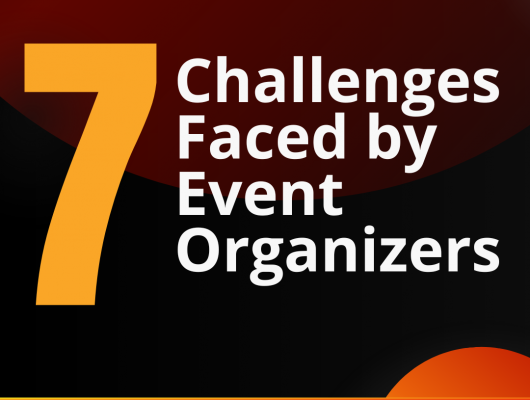It is estimated that the global SaaS and IaaS industry will be worth over $130 billion by next year. In the wake of the success of companies such as Salesforce, the industry has now evolved to the point where vendors and suppliers manage their own software and no installation is required (software is distributed via the cloud).
This SaaS-based cloud services model offers businesses significant efficiencies and cost savings and relies on cloud delivery at scale. Perhaps the most recent influential factors to impact SaaS businesses, and will likely continue to be, are Artificial Intelligence (AI) and Machine Learning (ML) respectively – they are set to become fundamental constituents of the SaaS landscape.
SaaS can be defined as a method of delivering software or other services such as hosting via the internet. The customer pays a subscription fee to access the software instead of buying, ‘owning’ and installing it in their own machines. We have already covered different types of SaaS solutions and the benefits and challenges of SaaS in detail in dedicated posts. Here is a summary of the major benefits:
Instant access from anywhere, using almost any device
Greater scalability
More flexible, the user can upgrade/downgrade anytime without any downtimes
Gives businesses operational agility and a competitive advantage
Low upfront costs compared to buying and maintaining their own infrastructure
The provider takes care of most of the things related to keeping everything running smoothly
Disaster management and compliance
Improves business efficiency
Helps businesses meet the expectations of their customers and offer them personalized experiences
Lower cost of ownership
Reduced carbon footprint
The concept of ‘rented’ IT services has been around for quite a while, but it was different in form than today’s SaaS and cloud computing. Although both the terms SaaS and cloud computing are used interchangeably and are related to each other, they differ in scope. Many sites that we use on a daily basis such as Facebook, Twitter, and Snapchat are essentially SaaS products at their core. SaaS generally refers to ready-to-use software that is delivered online including:
Customer Relationship Management, Marketing and Sales systems
Enterprise Resource Planning systems
Human Resource Management systems
Collaboration and Communications systems
Project Management systems
Payment Gateways and Billing Solutions
Accounting and Payroll
Content Management, E-commerce and Web Hosting solutions
Business Intelligence
Customer Feedback Management and Support systems
Office Suites
Specialty and niche solutions such as real estate software and vertical solutions optimized for specialized businesses
Cloud computing on the other hand is a broader term that also encompasses other key areas of the cloud computing pyramid. This includes IaaS (Infrastructure as a Service), PaaS (Platform as a Service), FaaS (Function as a Service), DaaS (Data as a Service) and DaaS (Desktop as a Service). The history of cloud computing and SaaS is almost the same and to keep this post simple, we’ll assume cloud computing and SaaS to be synonymous terms.
The History of SaaS
The Timeline of Computing
1950s: Discrete apps on the first commercially available mainframe systems
1960s: Discrete apps on midrange or minicomputers
1970s: Discrete apps on personal or microcomputers
1980s: Application suites on DOS-based personal computers and computer networks
1989: Invention of the World Wide Web
1990s: Enterprise app suites move to client-server architectures and mainframe computing
1990s: First SaaS application introduced, managed hosting services, ASPs (Single-tenant)
1998: 1st Multi-tenant SaaS app
2000s:SaaS app suites and ecosystems such as Salesforce begin to emerge
2010:Salesforce led the way to prove that SaaS is the future of software delivery
2010-Now: Refined SaaS products that include almost everything that was available as a packaged software
The Early History (the 1960s-1980s)
SaaS has been around since the 1960s in one form or another at a time when expensive and big computers were exclusive to large businesses. Very few SMBs could afford to buy one for themselves, which led to the birth of time-sharing or utility computing systems. These systems refer to terminals connected to a centralized computer or a mainframe.
All the data remained on these central computers and was accessible using the keyboards and monitors connected to each terminal. Users entered input through the keyboard and monitor, the data was processed in the central computers, and the output was sent back to the terminal. This allowed businesses of various sizes as well as other institutions such as universities and government agencies to access computing power without having to spend a lot of money on big and expensive computers.
1980s-1990s
SaaS really took off in the late 80s and early 90s with the expansion of the internet and steadily decreasing prices of personal computers, which became cheaper than they had ever been. This meant that it was now possible for employees to have their own computer at their desk instead of many employees sharing a computer. The need to rely on timesharing systems decreased with the passage of time, while the SaaS industry also adapted accordingly.
The old hub-and-spoke systems were replaced by computers that were interconnected through LAN (Local Area Network). This allowed businesses to host critical data on the central servers and other apps on the local computers. This allowed employees to access both the data and applications from their own computer through LAN, which is considered to be an early form of SaaS or cloud computing.
Businesses hired network managers/admins to ensure smooth operation and control of the company networks, data backup, hardware/software maintenance, up-gradation, and other related tasks. While large companies were able to afford dedicated IT teams and networking experts, SMBs relied on network managers to perform multiple roles, including training existing and new employees to properly use the network.
The 1990s-2000s
The complexity and requirements of the software increased at a rate faster than what the hardware was capable of, while the storage space also came at a premium. Enterprises that ran thousands of systems were finding it hard to manage their systems and apps. They were looking for a way to get their apps running on those thousands of computers without filling up all the space, which again led them to consider hosting their data on 3rd-party computers.
With the expansion of the internet and its wider availability, businesses no longer had to solely rely on in-house hubs or LANs. They quickly realized the cost-effectiveness and other benefits related to storing their data off-site and accessing it through the internet. Initially, the companies that provided over-the-internet services were called Application Service Providers.
The term ASP (Application Service Providers) referred to modern centralized computing. Like today’s SaaS providers, ASPs offered services such as managed business apps and hosting services. Centralized computing witnessed exponential growth. This allowed businesses to cut costs and saved them from heavily investing in the infrastructure and specialized resources needed to maintain and manage it.
The most obvious business concern at that time was data security as things were essentially not in their own hands. Businesses were hesitant to store their sensitive data in third-party systems and perceived new start-ups as security risks in the long term. However, the SaaS industry kept growing and started to gain traction by the late 90s and early 2000s.
The ASP system did not prove to be a huge success, but without it SaaS might not have evolved into its current form. The main reason behind the transition from ASP to SaaS is considered to be the huge promises ASPs made and failed to fulfill them. These promises included easy deployment, low cost, seamless updates, and fully-featured remote applications. Virtualization technologies played an important role in the evolution from ASPs to SaaS and allowed providers to easily create new instances for each business/user. SaaS providers delivered on these promises for the most part, and the contributing factors include:
SaaS providers started offering their own apps instead of hosting 3rd-party apps
Multitenant infrastructure, the codebase was the same but user data was kept separate
SaaS leveraged modern technologies such as virtualization, resulting in greater scalability and flexibility
ASPs were not that scalable and could not compete with SaaS when it comes to economies of scale
Because of the scalability issue, the users started complaining about slow speeds and poor customer experiences
Bloatware that came with a large number of packaged software was another factor that contributed to the success of SaaS
More bloatware meant more hard drive space, which was a premium back in the early days of computers, while necessary software also took its share of the CPU resources
Vendors priced their software as they pleased, while businesses had to sign restrictive contracts to use them
Software companies made businesses to pay huge amounts for upgrades with added costs for maintenance and support
Most ASPs had to manually set up the app environment and login, while SaaS solutions were more like self-service solutions
The Exceptional Journey of the First SaaS Provider
Concur started like most other packaged software businesses and sold physical copies of its expense and travel software as floppies and CDs. It moved away from selling in-store to selling directly to businesses, which is considered an industry first. Concur went public in 1998 on the same model with a market cap of $18m (after the 2001 crash).
It learnt the lesson and transformed itself into a SaaS provider offering software that only needed a web browser to work. With more than $600 million in annual revenue and 13 years later (2014), SAP bought Concur for $8.3 Billion, which is the biggest SaaS acquisition and something very few SaaS companies have been able to achieve.
The Future of SaaS
SaaS has taken various forms since the 60s and has not only survived over five decades but has also transformed into a technology that’s still growing at a rapid rate. The growth of SaaS and cloud computing is showing no signs of slowing down anytime soon. Experts believe that SaaS growth has not even reached its peak yet and is still in its middle age. What this essentially means is that the SaaS industry is mature enough, but the best of what it has to offer is yet to come.







